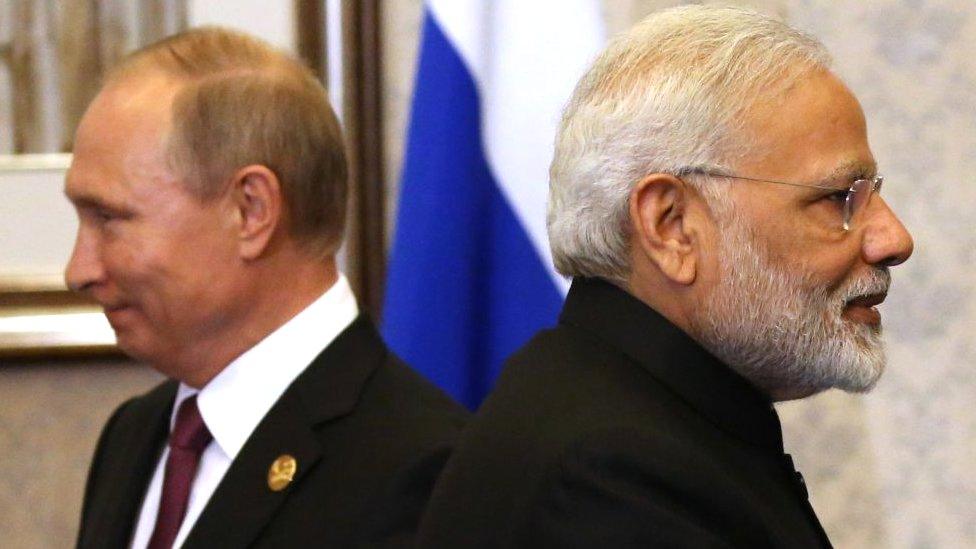2+2 talks: How India and US agreed to differ on Ukraine war
- Published
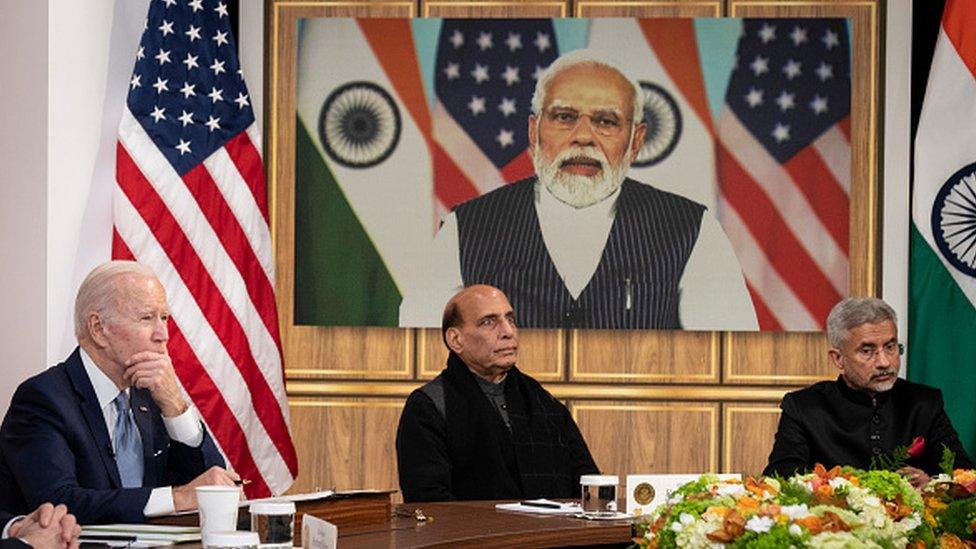
Mr Modi and Mr Biden held a virtual meeting on Monday
Indian Prime Minister Narendra Modi and US President Joe Biden's virtual meeting came on the back of their differing stands on Ukraine.
Days before their meeting, Mr Biden had called India's stand "somewhat shaky" and one US official had warned that India had been informed that the consequences of a "more explicit strategic alignment" with Moscow would be "significant and long-term".
But India stood firm in its stand despite what appeared to be growing pressure from the US. Delhi continued to promote dialogue to end the war. It didn't criticise Russia directly but chose some strong words about the need to respect the sovereignty of each nation.
In that backdrop, the leaders' summit - which was not planned and was requested by the White House - is significant for geopolitical developments.
It was followed by the planned annual 2+2 Dialogue between Indian Foreign Minister S Jaishankar, Defence Minister Rajnath Singh, and their US counterparts Antony Blinken and Lloyd Austin in Washington.
It's evident from the statements that both sides have shown willingness to understand each other's positions on Ukraine.
Pratyush Rao, director for South Asia at Control Risks consultancy, said the visit came at a sensitive time for the relationship.

Mr Modi shares good relations with Russian President Vladimir Putin
"This was a visible reaffirmation at the highest levels by both sides to the bilateral relationship, amidst all the media speculation about deepening strains over the Ukraine conflict. The message was, yes we do differ on Russia and will unlikely bridge the gap, but won't allow it to derail wider co-operation in the Indo-Pacific either," he added.
While PM Modi and his ministers reaffirmed their stated policy of non-alignment on Ukraine, Mr Biden and his ministers appeared more understanding of Delhi's position - a marked shift from some earlier strong statements of Washington officials.
Mr Blinken said India "has to make its own decisions about how it approaches this challenge". He also noted that India had issued strong statements at the UN and it had called for an independent investigation into the killings of civilians in Ukraine's Bucha.
In a candid remark, he said "India's relationship with Russia has developed over decades at a time when the United States was not able to be a partner to India".
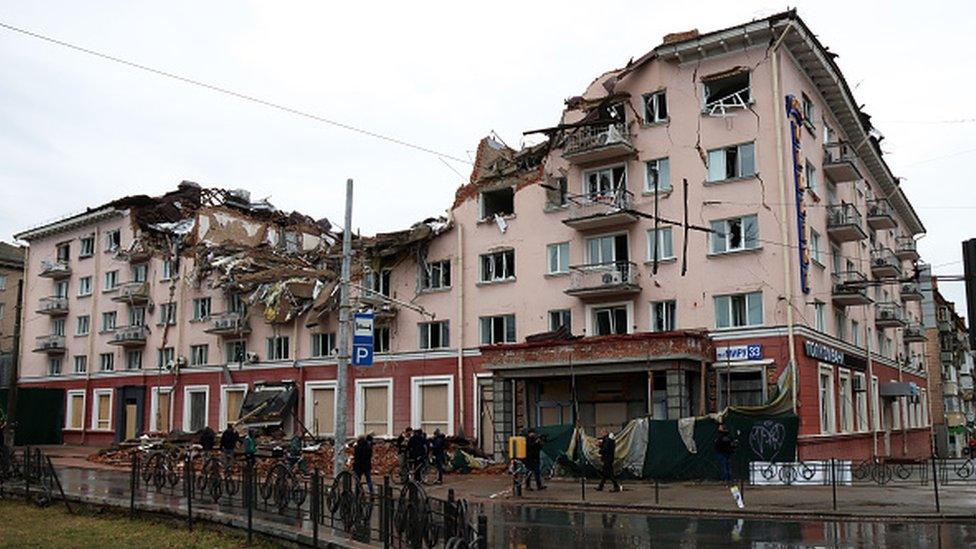
Many Ukranian towns have been destroyed in the war
He added that "times have changed" and the US was willing to be a partner of choice with India across virtually every realm - commerce, technology, education, and security.
Former Indian diplomat Anil Triguniyat said this statement showed that the US has understood India's position in a broader geopolitical context.
"Both sides have too much to lose if the bilateral relations are strained. Their relationship is rich and the meetings just reaffirmed that," he added.
Beyond Ukraine, the two sides also reaffirmed their commitment in continuing co-operation in the Indo-Pacific, and also in the trade, defence and security sectors.
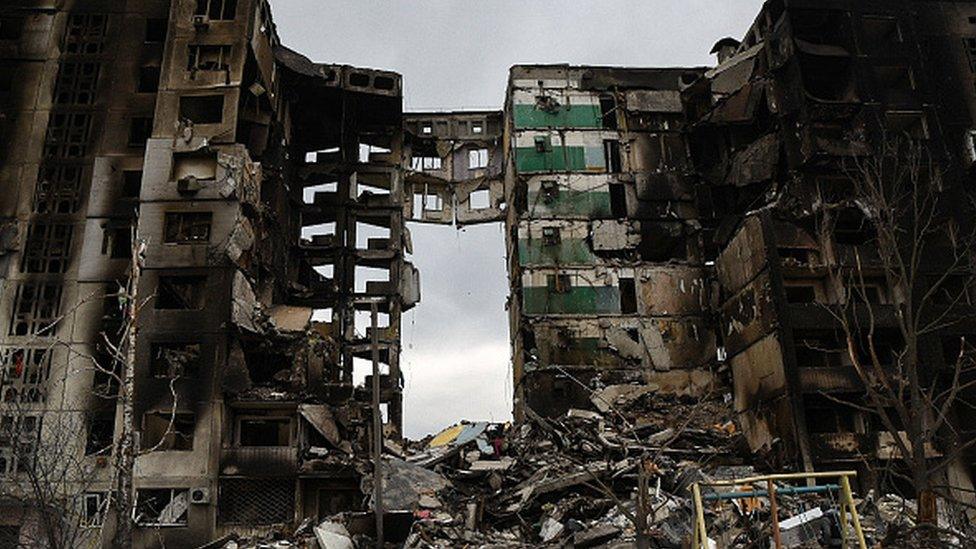
Ukraine has also accused Russia of indiscriminate shelling of its cities
The US said it saw India as "a net provider of security in the region".
"China is seeking to refashion the region and the international system more broadly in ways that serve its interests," Mr Blinken said.
Both the US and India agree on playing a bigger role in the region to counterbalance China's growing influence.
India has a long disputed boundary with China. Their troops were involved in deadly clashes in the Galwan valley in 2020 that resulted in the deaths of 20 Indian soldiers. China said later it lost four troops in the clash.
Mr Jaishankar acknowledged that the Quad - which includes India, the US, Japan and Australia - had emerged as "a powerful force for global good" and its "elevation benefits the entire Indo-Pacific".
Mr Rao said India reposing its faith in the Quad was significant.
Russia, India's time-tested ally, has criticised the Quad and called it a forum to target China. Both Moscow and Beijing have become closer and often jointly taken stands against the West.
In that context, Mr Rao said that the Indian foreign minister's public and unequivocal endorsement of the Quad was important and will likely resonate among his audience in Washington.
Defence ties
Washington also acknowledged that Russia is India's biggest defence supplier - accounting for more than 50% of its imports.
In contrast, the US was India's second-largest supplier between 2011 and 2015 after Russia, but fell behind France and Israel in the period between 2016 and 2021.
Former Indian diplomat Jitendra Nath Misra said India continued to import from Russia because it got good value for money, and, crucially, transfers of technology in some areas.
"The US needs to give commitments on technology transfers to be able to get a bigger share of India's defence imports," he said.
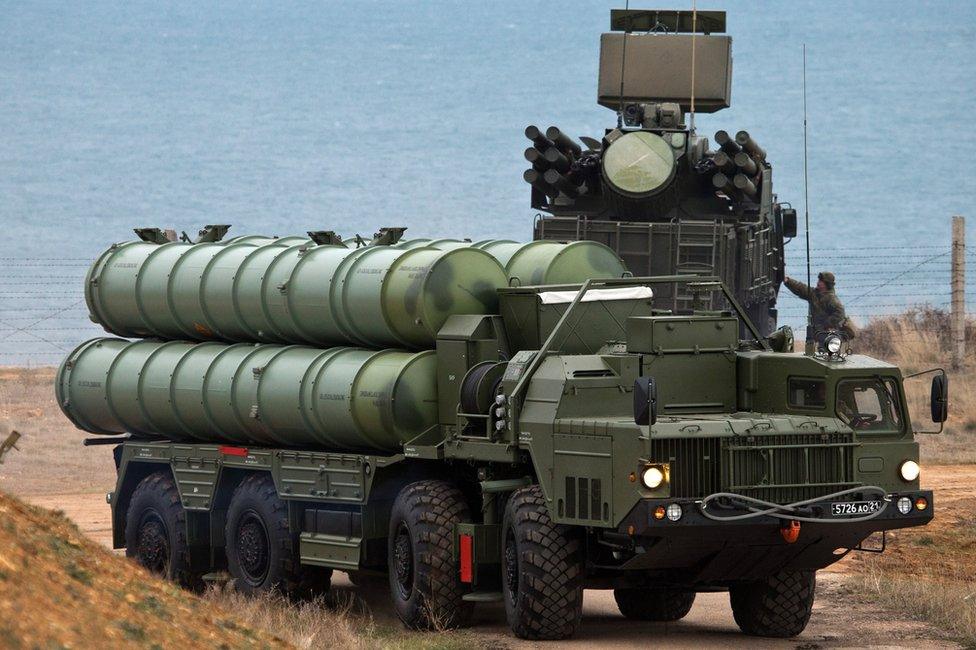
A Russian S-400 anti-aircraft weapon system in Crimea
Defence Minister Singh talked about PM Modi's "Make in India" campaign and invited US defence companies to set up shop in India.
But there hasn't been any big-ticket announcement on this. However, a significant measure was announced about the two countries jointly developing air-launched unmanned aerial vehicles.
"More such measures are needed to address India's defence needs and help reduce its dependence on Moscow," Mr Misra added.
But the crucial issue of India's acquisition of Russia's S-400 missile defence system remains unsolved.
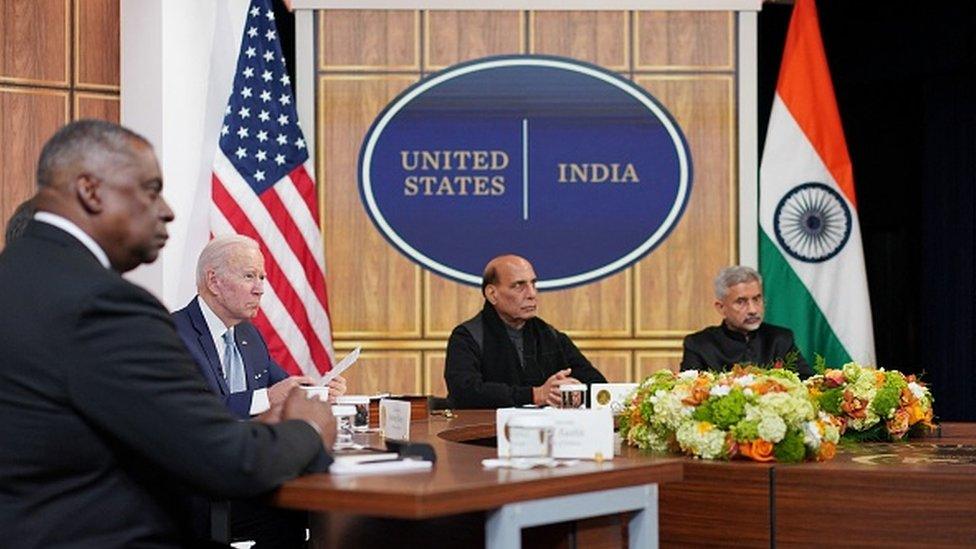
The leaders' meeting was held at the request of the White House
The purchase has come under the Countering America's Adversaries Through Sanctions Act (Caatsa), which was introduced in 2017 to target Russia, Iran and North Korea with economic and political sanctions. It also prohibits any country from signing defence deals with these nations.
Mr Blinken said the "US had not made a determination regarding potential sanctions or potential waivers under the CAATSA law".
There was also a veiled suggestion to India when Mr Blinken said the US was asking countries to avoid major new transactions for Russian weapons systems.
Mr Triguniyat says the ambiguity over the S-400 showed that the US wanted to keep its options open but it doesn't want to rock the boat at the moment.
It's clear that there is a lot more ground to cover for the US to replace Moscow as India's largest defence supplier.
Meanwhile, Mr Blinken also talked about India's human rights record, saying the US was "monitoring some recent concerning developments in India, including a rise in human rights abuses by some government, police, and prison officials".
The Indian ministers didn't respond to this but analysts say Democrats, including former president Obama, have raised such issues in the past.
The statement may have caused discomfort to Indians but analysts say its unlikely that the issue will become a major irritant in the relationship.
Energy and trade
Indian companies have been trying to circumvent sanctions to take advantage of the discounted oil prices being offered by Russian firms.
When this question was put to Mr Jaishankar, he denied that India was ramping up its oil imports from Russia.
"I suspect, looking at the figures, probably our total purchases [from Russia] for the month would be less than what Europe does in an afternoon. So you might want to think about that," he said.
The US has steadily increased its export of crude oil and refined petroleum products to India - accounting for 15% of India-US trade, which stood at $113bn in 2021.
The two countries believe that there is vast potential to take the bilateral trade to $500bn in the future. The two sides announced a series of measures, including restarting the US-India Commercial Dialogue and the US-India CEO Forum, to improve trade ties.
- Published11 April 2022

- Published3 March 2022
